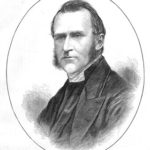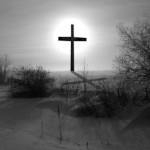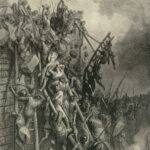Free Will Baptists are an association of independent baptistic church congregations. Their 17th century origins are rooted in the rejection of infant baptism, and affirmation that believers only should be baptized.
The earliest Baptists were Arminian, although Calvinist Baptists arose soon afterward. Both Calvinist and Arminian Baptists shared some sense of commonality with each other as they were persecuted by those committed to infant baptism.
English Baptists had their origins under the heel of a repressive monarchy which insisted that its subjects submit to the King’s religion. Baptist affirmation of soul competency and the indwelling of the Spirit brought them into serious conflict with the crown. Many, many Baptist pastors died in prison.
The theological commitment to soul competency and the indwelling of the Spirit informed and determined the shape of Baptist polity (http://treasuresoldandnewbiblicaltexts.blogspot.com/search/label/Baptist%20Polity). They rejected both bishop rule (episcopalianism) and elder rule (presbyterianism), and embraced congregationalism which divests authority away from the hand of one leader or several leaders into the hands of the congregation. Thus, Baptists choose their own leaders, rather than having them appointed by a higher human authority.
Under these conditions, Baptists migrated to America as early as the 17th century. Roger Williams who started the first Baptist church in the colonies (Providence, R.I.) was thought to have been an Arminian Baptist, although his church quickly became a staunch Calvinist Baptist soon after his departure. Baptists were delineated along the Calvinist-Arminian controversy, with Calvinists known as Particular Baptists and Arminians known as General Baptists. Denominational names became more specific through the 18th and 19th centuries.
Early Baptists in America typically practiced feet washing as an act of fellowship in the context of worship, as commanded by Jesus. While most Baptists have abandoned this practice in the 20th century, Free Will Baptists have remained true to its Baptist historical roots in obeying this command.
In this early period, two FWB movements were distinguishable. In the north, a well organized denomination traced itself back to the ministry of Benjamin Randall. In the south, loosely organized churches can be traced to the ministry of Paul Palmer.
The Randall movement denominational apparatus facilitated considerable missions activity, theological publication, and hymnody. By 1907, the Randall movement could boast of seven theological colleges and about 1100 churches.
The Randall movement was influenced to some extent by Wesley’s theology of continuance in salvation. The emphasis on continual repentance was such that historically, the Randall churches seemed to embrace a salvation of grace through faith, but a continuance in salvation by not sinning; if a believer were to die soon after committing a sin without having repented of it, he would presumably be condemned to hell. In contrast, the Palmer movement affirmed a salvation by grace through faith and continuance in salvation by grace through faith; the only way a person could forfeit his salvation is to make shipwreck of his faith. This description of the Randall view of continuance may be over stated, but at least serves to highlight an ongoing issue within the movement.
The Civil War exacerbated regional and theological differences, keeping the two movements ecclesially distant from each other. In contrast, arising out of the missions movement which needed denominational structure, many Baptist groups were forming closer formal alliances with each other.
In keeping with this trend toward ecclesial unity, from 1907-1911, about 1100 churches in the Randall movement independently and voluntarily associated themselves with the newly formed Northern Baptist denomination. This voluntary merger included nearly every Freewill Baptist church in the north (a few churches in Scioto County Ohio did not vote for the merger, and FWBs in Oklahoma did not merge). The seven affiliated Freewill Baptist colleges also were involved with the merger.
The merger was designed to emphasize missional cooperation and to deemphasize theological differences. The result was the merger of Calvinist and Arminian Baptist churches. Practically speaking, churches typically embraced Arminian soteriology, except for unconditional continuance in salvation (eternal security). The Northern Baptist denomination later experienced several major splits along conservative-liberal issues, but is now known as American Baptist Churches–USA, consisting of over 5000 churches. Next to the Southern Baptist Convention, it is the second largest Baptist denomination in America.
Meanwhile, the Palmer movement seemed to languish due to a lack of denominational organization. To the extent that the Palmer movement was dependent upon northern Freewill Baptist literature, theological impetus, and cooperative ministry, the merger may have exacerbated this disorientation.
In 1935, FWB leaders came together and chartered the National Association of Free Will Baptists. In 1942, the FWB Bible College was established. In the 1950s, remnant Randall churches from West Virginia and Kentucky established many new FWB churches in OH MI IN and even IL; for example, in 1945, there were less than 10 FWB churches in OH, while just 30 years later there were an astounding 150.
These roots in the rural south and hills of Appalachia are, for better or for worse, defining for modern FWBs. Culturally, the typical FWB church 1) is rural; 2) approaches worship without a prescribed liturgy or written prayers; 3) values informal, personal, and conversational worship; 4) eschews high church music; 5) is often dependent upon an uneducated clergy; and 6) has a genuine and natural sense of fellowship which impressively extends beyond the local church to the local association and beyond to various formal and informal networks on a national level, all of which seems to transcend other church groups and bodies.
FWBs have exerted considerable effort in expanding beyond its rural roots while at the same time retaining the best of its heritage. Despite some anti-educational elements in the denomination, FWBs have three colleges which are affiliated with either a state or the national association. Two additional colleges which have no direct ties to a state or the national association hold to FWB theology and have strong ties to a number of individual FWB churches. None of these colleges offers an MDiv which otherwise is the standard degree for ordination in many denominations. However, Hillsdale FWB College (Moore OK) offers an M.A. in ministry.
In recent years, FWBs have also seen many of its churches evolve away from its historical heritage in its ministerial approaches, some of which may be good or not so good. For example, National Ministries has a number of its church plants situated in major cities. Also, a number of churches have abandoned free church worship for contemporary worship. Moreover, a number of churches have moved away from congregational governance, embracing either an elder ruled governance or unilateral control by a single pastor. Consequently, visiting a FWB church, one probably should expect a genuinely friendly welcome, an informal welcome with announcements, three to five gospel hymns, special music and perhaps a choir number, a fervently preached sermon, and a hymn of invitation. Much of this will be led by non-professionals. A few individual churches may deviate from these expectations significantly. Sunday evening services often are more informal. Many churches regularly feature a time of personal sharing and testimonies.
One constant, however, has been FWB theology. It assumes a fierce, uncompromising commitment to the Bible which is unlikely to be challenged in the next generation or so. With this commitment comes a conservative hermeneutic, which is often practiced with some nuance, but not always. While a wide range of ministerial options is available for women, including single missionary service, there probably are currently no ordained women or women pastors in any affiliated FWB church. A good number of churches are opposed to or look suspiciously upon cooperative ministries with other denominations or churches; some churches hold to a “second line separation” which means that they will not fellowship with a sound, conservative believer who fellowships with someone who is a moderate or liberal Christian. The denomination voted to leave the National Association of Evangelicals, even though one of its own members (Billy Melvin) was instrumental in its initial founding and growth.
The most significant unique contribution FWBs have made to the annals of church history is to maintain and vigorously and effectively cultivate Reformation Arminian theology. This is all the more important in light of the Calvinist resurgence in the last decade. Reformation Arminianism poses an alternative to Calvinism which can be embraced by a large number of churches throughout the Evangelical world. It affirms that 1) Jesus’ atonement paid the sin debt of all people; 2) that people enjoy this payment of their sin debt when they are united with Christ by faith; and 3) that God’s Spirit enables people who are totally depraved to believe in Jesus for salvation. The theological works of FWB theologians Stephen Ashby, Leroy Forlines, Robert Picirilli, and J. Matthew Pinson have had a major influence within the modern Arminian movement, as can be seen in the Society of Evangelical Arminians (http://arminians.org/).






Leave a Reply